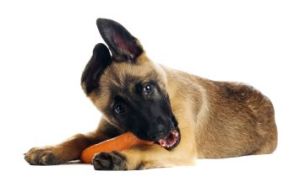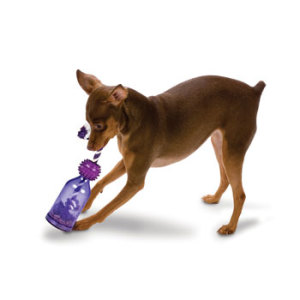Miami Dog & Puppy Training Tip
Teaching your dog new behaviors can be challenging. While using reward-based training, it is important to find what motivates your canine. Every dog has different likes and dislikes. Why not try something new? Even if your dog is food motivated, you can switch up rewards to make training even more exciting!
There are two important methods to reward-based training; Positive Reinforcement and Negative Punishment. Positive reinforcement is giving the animal a reward after they perform a wanted behavior. Negative punishment is commonly misunderstood. It is not a harsh method of training but instead is the act of removing something desirable to the animal to reduce unwanted behavior.
Example of using Positive Reinforcement:
A dog is playing in a park off-leash and the owner calls him over. When the dog runs over to the owner, they receive a piece of chicken.
Example of using Negative Punishment:
A puppy is biting roughly on their owner’s ankles. The owner stops playing with the puppy (removing their attention). If the puppy continues to bite, the owner puts the puppy into timeout (removing the puppy’s freedom).
Positive Reinforcers Every Dog Owner Should Use:
Food
Food is a primary reinforcer. Primary reinforcers are rewards that the animal naturally enjoys and instinctively needs for survival.
- Kibble or Treats: Keep the size of each treat small and find a type of food that motivates your dog. As an alternative to high calorie treats, you can use their meal for training. For picky eaters, try a higher value of food such as boiled chicken or cheese.
- Healthy Options: Try not to fill your dog up on fattening dog treats every day. Some healthy alternatives include baby carrots, apple slices, cooked chicken, peanut butter, green beans, and fat-free greek yogurt.
Toys
Determine which types of toys to give to your dog based on their behavior. Do they perk up and focus on you when they hear squeaking? If your dog tends to tear up the couch or stuffed animals, opt for tough-made rubber toys such as Kong or RuffWear brands.
Make sure any toy you give your dog is safe. Observe how they interact with it. Dispose of any toys which are falling apart, have become sharp, or have become small enough to swallow and/or choke on. You should always exercise caution when giving your canine rawhide bones or antlers as these can break apart or splinter.
- Squeaky/Noisemaking toys
- Frisbee or action toys
- Treat Dispensing toys
- Homemade enrichment
Toy Tips:
Change up the toys for your pup. Instead of having all of them available 24/7, reserve a few for special playtimes. You can also utilize toys for training – ask for a behavior and then throw their favorite ball!
Praise/Attention:
Dogs are known to be mans best friend and our attention can be one of the best types of reinforcers. Whether it be our voice, touch, attention or overall level of excitement this is a great option for those dogs which are not very food motivated.
- Pump up your energy! – Many social animals, including dogs, feed off of our enthusiasm. If you get excited and up your energy level, your dog most likely will get amped up as well.
- Attention – Give any form of positive attention after your pup has performed correctly. You may be surprised on how much your dog responds to your praise. In the case of negative behavior, simply remove your attention by either avoiding eye contact and/or turning away from your dog.
Freedom
Not commonly considered a type of reward, freedom in different forms can be highly motivating. Humans and dogs alike enjoy to interact and play in a variety of environments.
Types of Freedom and When to Give it:
- On a Walk: ask your dog to do a sit before taking them off-leash in the park.
- At Home: Ask your dog to sit at the back door. Once sitting, allow your pup to run freely in the yard. If your puppy has been quietly resting in their crate, let them out to play for awhile as a reward.
- Interacting with guests: Whether it be in your home or out in a public setting, you can allow your dog the freedom to greet guests only when they elicit polite behavior.
Remember to only offer your dog a reward when they perform a desired behavior. Your reinforcement history will likely cause them to repeat these good habits more often in the future!



Recent Comments